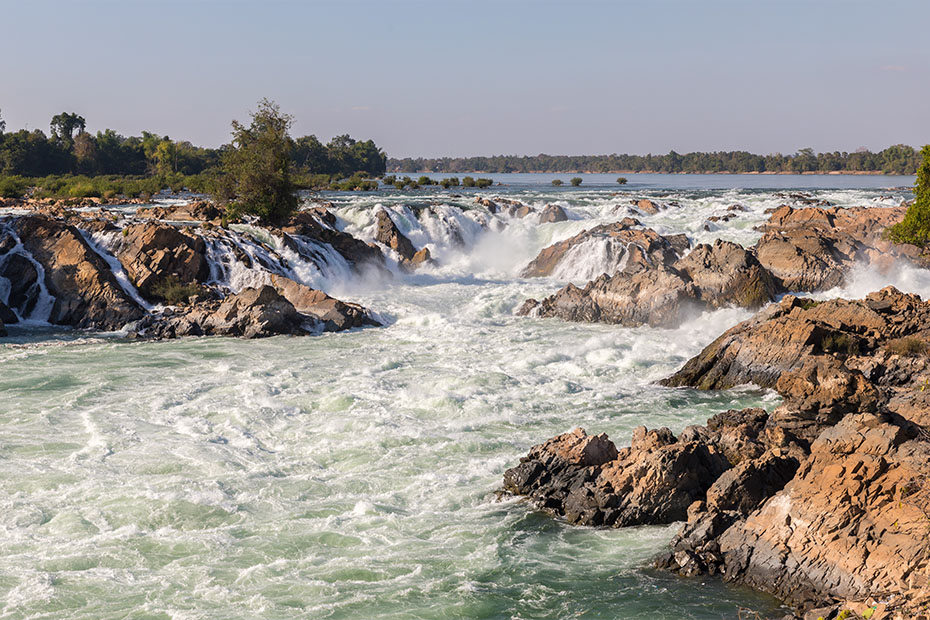Khonephapheng Waterfall in Khong district of Champassak province has been recorded as the world largest waterfall, according to the website of www.worldwaterfalldatabase.com.
World Waterfall Database lists the world’s largest waterfalls by width and ranks Laos’ natural wonder on top. The representative list contains those known to have an average width of at least 91.44 meters based on data available to the website.
The website mentioned the scale of the waterfall and that Khonphapheng Falls is a series of falls and rapids where the Mekong River splits into seven large channels, as well as hundreds of smaller ones. It cascades 69 feet over a series of falls and rapids that when measured from one edge to the other stretch over 10 kilometers in width, making it the widest waterfall on the planet.

Due to the immense volume of the Mekong River, the amount each channel of the river drops varies. The most defined parts of the waterfall drop about 13.7 metres at about a 60 degree angle, but other parts of the river, including the largest channel, appear more like a series of rapids.
One of the smallest channels doesn’t appear to even have any discernable rapids at all – rather it makes a slow and steady descent as it winds down the escarpment. In monsoon season, the flooding river swallows the waterfall entirely, leaving nothing more than a rough stretch of waves and riffles.
On the World Waterfall Database rankings the largest waterfall in the world by width is Khonphapheng Falls on the Mekong River at 10,783 meters followed by the Para with 5,608 meters on the Rio Caura in Venezuela; the Guaira with 4,828 meters on the Rio Parana in Brazil; Kongou falls with 3,200 metres on the Ivindo River in Gabon and the Iguazu with 2,682 metres on the Rio Lguazu in Argentina.
The World Waterfall Database was established to provide a complete, accurate record of the waterfalls throughout the world. Looking in any freely available encyclopaedia, entries for waterfalls usually yield a short list of well known or well publicized waterfalls but the lists are far from complete and usually rife with inaccuracies due to the data never having been field checked. Most people are unaware of these discrepancies because experts in the field have not readily been able to verify data on such a wide basis.
(various sources)



















